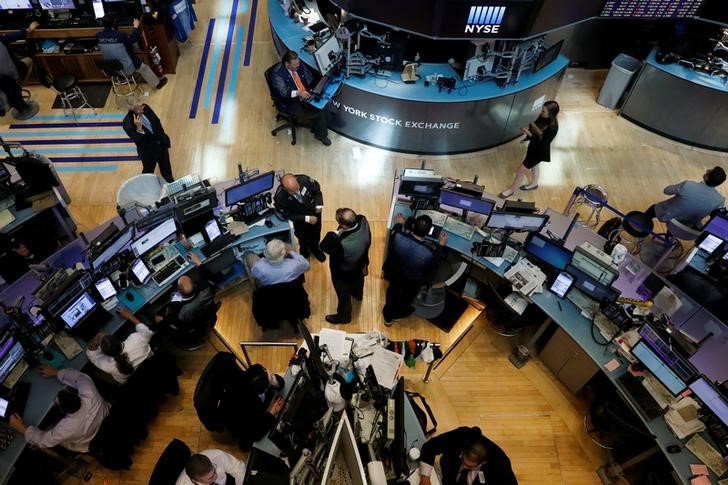By James Saft
(Reuters) - (The opinions expressed here are those of the author, a columnist for Reuters)
With equity indexes at all-time highs, global mutual fund and ETF investors may be choosing now as the time to reverse a long-running move into bonds and out of equities.
That’s either in harmony with retail investors’ legendary ability to pick the top or a canny bet on global reflation.
Since the great financial crisis the broad global trend has been for mutual and exchange-traded fund investors to load up on bonds while trimming equities. Globally, funds held in equities vehicles went from above 90 percent of the whole in 2007 to about 70 percent now. And while that figure for U.S. funds bottomed at about 60 percent in 2010 and is now at 67 percent, equity funds have suffered net outflows for the majority of the last few years, except for a spike in inflows after the 2016 U.S. election.
This 'de-equitisation,' driven partly by battle-scarred individuals and partly by a large move into long-term debt by pension funds seeking to hedge long-term obligations, has been expensive.
Over the past five years, the S&P 500 has returned 13.4 percent per annum, against just 2.3 percent for 10-year Treasuries.
But now, what started as a mild trend in the U.S. of upping equity exposure seems to be going global, perhaps as the last bears capitulate in the face of a low-volatility march higher in equity markets. There is also the fact that major central banks are signaling they may at last start to run down their own multi-trillion-dollar portfolios of bonds.
“We find increasing evidence that the de-equitisation process, by which the weight of equity holdings in portfolios diminishes over time and is substituted by debt, has finally come to an end,” Alain Bokobza of Societe Generale (PA:SOGN) wrote in a note to clients.
“The main driver for re-equitisation could be gradually rising bond yields (Make reflation great again). Rising bond yields imply losses on existing bond portfolios (underweight bonds) and, when bond yields move higher, the risk budget of investors tends to increase (overweight equity)."
In Europe, as bond yields bottomed, the equity share of fund holdings has crept higher this year, from a low below 60 percent in mid-2016 to about 65 percent now. Net flows to European equity funds have turned positive and assets, which decreased for about 18 months to January, have grown rapidly, indeed at a rate not seen since the bottoming of equity markets in 2009.
CANNY BET OR HISTORY REPEATS?
There is no question that a return to equity fund flows over bonds would have a significant market impact. A 10-percentage-point re-weighting into equities implies a global flow of $2.3 trillion. That compares with a cumulative net inflow into bond funds of almost $1.8 trillion since 2007.
That inflow, notably, happened alongside massive official buying of bonds by central banks seeking to engineer a reflation. Those same central banks now seem ready to reverse course. The ECB is expected to announce its plans for tapering its bond portfolio sometime in the next several months, though it is currently committed to buying 60 billion euros a month until at least December. The Federal Reserve too is widely expected to start to allow its $4.5 trillion stock of bonds to dwindle, perhaps by the end of the year if not sooner.
If that comes to pass it will surely change the relative attractions of stock and bonds. Longer-term Treasuries have already become more volatile than the almost comatose S&P 500.
But though central banks say they want to taper, the facts on inflation are a bit more stubborn. U.S. inflation is heading further below the Fed’s 2 percent goal, and in the euro zone core inflation remains stuck at about only 1 percent.
That does not sound like an equity-friendly reflation. There is also the possibility that equity market volatility follows bond market volatility higher as central banks sell bonds, especially if tapering comes alongside mixed economic news, as it is very likely to do.
And while funds, especially ETFs, are widely held by institutions, it is a lot easier to see the intuitive sense of selling bonds with rates this low than buying stocks with prices this high.
In the run-up to both the dotcom bust and the great financial crisis retail investors did what they do best: buy what has just gone up in price.
A rebalancing of fund portfolios towards stocks may just happen, but it may, once again, prove a reliable sell signal.
(At the time of publication James Saft did not own any direct investments in securities mentioned in this article. He may be an owner indirectly as an investor in a fund. You can email him at jamessaft@jamessaft.com and find more columns at http://blogs.reuters.com/james-saft)
